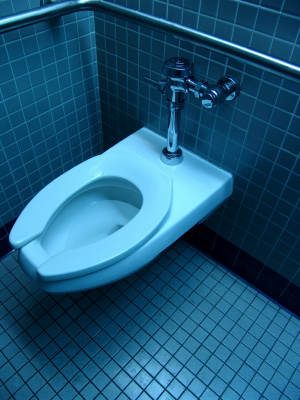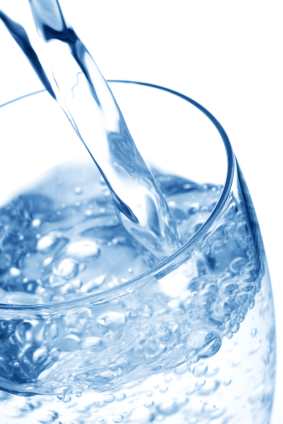
By far, water is the most necessary resource on Earth for all living organisms. However, clean drinking water accounts for less than 1% of the total water available, and this number is continuously decreasing. Increasing population and the resulting greater waste production are the cause. In a recent interview with USA Today, Bill Cooper, director of the Urban Water Research Center at the University of California-Irvine, predicts that "Water is going to be the oil of the 21st century."
According to the United Nations, water use increased six-fold during the 20th century, more than twice the rate of population growth. Surprisingly enough, industrial and municipal water recycling is considered to be amongst the most promising efforts to tackle this difficult circumstance. Singapore is at the forefront of implementing this process in order to produce clean drinking water for its residents. Prior to this, the country heavily depended on their neighbor, Malaysia, for treated water. Using GE's state of the art technology, sewage and other wastewater is recycled to produce treated water, which is claimed to be as pure as distilled water. With increasing water demands, the treated water is beginning to be used widely for residential purposes, alongside its industrial usage.

The process behind purifying wastewater
Many wonder how it is possible for toilet water to end up filling water glasses in a house. In reality, only about 10% of residential wastewater comes from toilets, while the remaining comes from laundry machines, showers, and other sources.
To process of purification begins with the water flowing through the sewage system to a treatment plant. At the treatment facility a process known as microfilteration takes place. Microfilteration filters the sewage water by trapping bacteria as the water is passed through a membrane. Next, the water undergoes a reverse-osmosis process which blocks salt, viruses and pharmaceuticals as the water is pushed through a semi-permeable membrane. Finally, the water is treated with hydrogen peroxide and high-intensity ultraviolet light in order to kill any trace organics. This water is then directly piped to residential waterlines, or in some instances may be cleaned further to meet drinking water standards depending on the geographical location.
According the Andrew Benedek, the pioneer of wastewater filtering technology now owned by GE Water and used in Singapore, "The water often is cleaner than what you can buy in a store." By 2060, Singapore plans to meet half its water demands by purifying sewage water.
Some interesting facts:
- In Windhoek, Namibia, drinking purified wastewater has been the norm for decades
- In Fairfax, Virginia, 5% of the daily drinking water comes from purified sewage
- In parts of Orange County, California, 20% of the daily water demand comes from recycled wastewater
Despite the effectiveness of wastewater treatment, acceptance has been a huge hurdle due to the public's distaste for the concept of water recycling.
You can read more about recycling wastewater in this article from USA Today.
Do you know the three most important water treatment issues affecting ChEs? Find out at AIChE Web Forum 6/14 here.



Comments
I am sure that the chemicals and what not that have been used to recycle the water would not be so great, if the water could be purified and not be a danger to people and taste reasonably good, I do not see any problem with it.
The process you described is in fact exactly how large hospitals purify their water for use in hemodialysis. They may not use wastewater as the source, but tap water is passed through their purification system (which includes filtration, adsorption, ion exchange, reverse osmosis, and ultraviolet irradiation) in order to remove contaminants from the water used to prepare dialysate. Heck, if patients with kidney failure can rely on this process and trust this water to purify their own blood, then I'm sure it is a thorough process, regardless of where the water originated from.
Very informative article. I was shocked to learn about the source of our drinking water. Good to know that we have the technology to minimize waste of one of the most precious resources in the world.
This is a really interesting topic, especially because most of the time we don't think about where our drinking water is coming from. The thought of toilet water turning into tap water is a little disgusting, but I suppose it's a better option than recycling your urine into drinking water, which is what NASA has recently started doing !
Syed, this is a great first post. We all have to get used to the idea that water is a limited resource, rather than something free and of infinite supply.
Great post on water! We need to keep stressing the importance of education to help the public get over the "squeamishness." Singapore does an excellent job on educating the public at an early age! AIChE recently launched an initiative on water, for more info visit: <a href="http://water.aiche.org" rel="nofollow">http://water.aiche.org</a>!
Is it legal and feasible to use recycled water without advertising it to the public? It sounds as if no one would know the difference.
Interesting article and shocking stats! I would definitely accept having tap water from treated sewage water and moveover would use it in the lab (maybe after a few ion removing steps) where purity is essential!
Nice article! Water access is definitely one of the major upcoming challenges chemical engineers are ideally suited to tackle!
A good article and certainly of interest to me. The one exception I would take is that you state "However, clean drinking water accounts for less than 1% of the total water available, and this number is continuously decreasing. Increasing population and the resulting greater waste production are the cause." The real reason for such a small percentage of water being drinkable is that most of the worlds water is seawater, not that it is used domestically/industrially. However, similar technology that you discuss can be used to create drinking water from seawater as well. Good job.
Interesting article, well written. Given where we live, we have plenty of fresh water. I think the term sewage water would be re-defined before we start drinking it. Every type drinking of water is processed one way or another, but for now I'd have to say that I would try my best not to. Reverse osmosis is a pretty nifty technique and Tim Horton's already uses it for their coffee (which is why people are so addicted to it). Good article man, keep up the good work!
Noor: Chemicals are definitely used to purify the water. However, the amounts added and the traces left over after the whole process are regulated from municipality to municipality, in order to ensure that it is safe for consumption. Robert Sheppard: Wow that is so interesting and amazing! Chris Robinson: The technology continues to advance and become better. Misha: Yukk! But you have to do what you have to do. John Vasko: Thank you very much. Miriam: Thanks for the extra info. Haseena: I am not sure why it would have to be advertised, they are still receiving clean drinking water only the source is different. Emily: Thanks for the feedback! Tom Adams: That is soo true. Jim Dickson: Thank you for the clarification. Nadia: They are applying their knowledge to some extremely great causes. Nauman Gill: Thanks!
Definitely an eye opener for something simple yet essential which most people take granted for. People have learned to accept other recycled materials to conserve the earths natural resources, it's only a matter of time more and more people will easily accept treated sewage water. With technology gaining the publics trust in almost every aspect, water recycling cannot be that far behind. Impressive article! Interesting facts!
Very informative read. As water becomes more and more scare by the day, we need to definitely consider implementing methods of water recycling. I think once companies and the government put together effective campaigns to advertise water recycling, the public may be more inclined to adopt such changes. Water recycling seems to be the future.